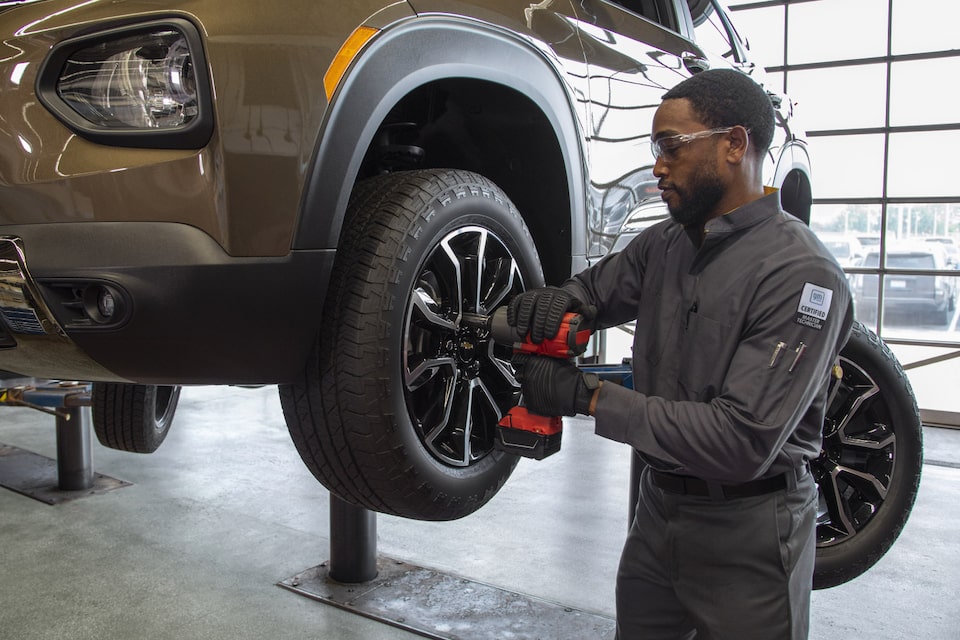Conserve Big with Mopar Tire Service Specials: Finest Deals and Specialist Care
Conserve Big with Mopar Tire Service Specials: Finest Deals and Specialist Care
Blog Article
Tire Service: The Impact of Climate Conditions
When it comes to making certain optimum efficiency and security on the roadway, understanding the effect of climate problems on tire service is important. In this discussion, we will check out the elaborate partnership in between weather problems and tire service, shedding light on the significance of weather-specific tire upkeep techniques and factors to consider.
Warm and Tire Efficiency
When revealed to heats, tires experience adjustments in performance that can dramatically influence vehicle safety and handling. The warmth generated from extended driving or heat conditions causes the tire rubber to soften, resulting in reduced walk life and enhanced wear. As the rubber comes to be softer, the tire's grip on the road reduces, influencing stopping distances and general traction. In extreme instances, excessive warmth can also trigger tire blowouts, posturing a severe safety danger to the automobile and its passengers.
In addition, high temperatures can increase the process of tire aging, creating the rubber to degrade extra swiftly. To minimize the impacts of warm on tire efficiency, chauffeurs need to on a regular basis examine their tire stress, rotate tires to ensure even put on, and check for any kind of signs of damages.
Winter Impacts
Cold weather condition conditions can have a substantial effect on tire performance and safety. In cold weather, tires may also shed air stress more swiftly, which can affect taking care of and gas effectiveness.
To minimize the effects of winter on tires, it is important to frequently examine tire stress and inflate them to the producer's recommended levels. Using winter months or all-season tires made for winter conditions can also enhance grip and grasp on icy or snowy roadways - discount tires morris il. Proper tire upkeep, consisting of routine evaluations for wear and damage, ends up being much more critical throughout colder months to guarantee ideal efficiency and safety and security
Rainy Issues Effect
Tires with damaged footsteps are much more prone to hydroplaning, where a layer of water constructs up in between the tire and the road surface, leading to loss of traction. To combat this, motorists should frequently evaluate their tires for ample walk depth and consider investing in tires especially made for wet problems.

Snow and Tire Safety And Security
Snow-covered roadways position special challenges for vehicle drivers, highlighting the significance of proper tire selection and maintenance. When driving in snowy problems, having the best tires can make a significant distinction in safety and security and efficiency. Wintertime tires are designed with unique rubber substances and walk patterns to provide far better traction on snow and ice compared to all-season tires. The deeper footsteps and sipes of winter tires assist hold the roadway better, decreasing the risk of slipping and gliding.
Along with making use of winter season tires, it is important to ensure they are correctly blown up. Cold weather can create tire stress to go down, affecting traction and handling (mopar tire service specials). Routinely checking and preserving the appropriate tire pressure is vital for optimal efficiency in snowy conditions

Weather-Related Tire Maintenance
When encountered with different climate condition, appropriate tire upkeep comes to be an important aspect of vehicle safety and efficiency. Weather-related tire upkeep includes a variety of techniques intended at making certain ideal tire feature and longevity in different weather circumstances. One crucial element of weather-related tire maintenance is tire stress regulation. Changing temperature levels can trigger tire stress to differ, impacting grip and gas performance. Regularly readjusting and inspecting tire stress according to maker referrals is necessary for safe driving in transforming climate condition. In addition, tire walk deepness plays a significant role in dealing with different climate aspects. Tires with ample walk deepness supply better grasp on wet or icy roadways, minimizing the danger of hydroplaning or skidding. When tread wear reaches a certain deepness is essential for keeping traction and security in negative weather condition, checking tire step routinely and changing tires. By prioritizing weather-related tire maintenance, chauffeurs can improve security, improve automobile efficiency, and lengthen the lifespan of their tires.
Final Thought
To conclude, weather have a considerable effect on tire performance and safety. From warm impacting tire stress and put on to winter reducing grip, it is important to consider the climate when preserving and making use of tires. Stormy conditions can decrease grasp and bring about hydroplaning, while snow can increase the risk of mishaps if tires are not correctly equipped. Weather-related tire upkeep is vital in guaranteeing optimal efficiency and safety on the roads.
In this conversation, we will discover the complex connection between climate conditions and tire solution, shedding light on the importance of weather-specific tire maintenance methods and considerations.

Report this page